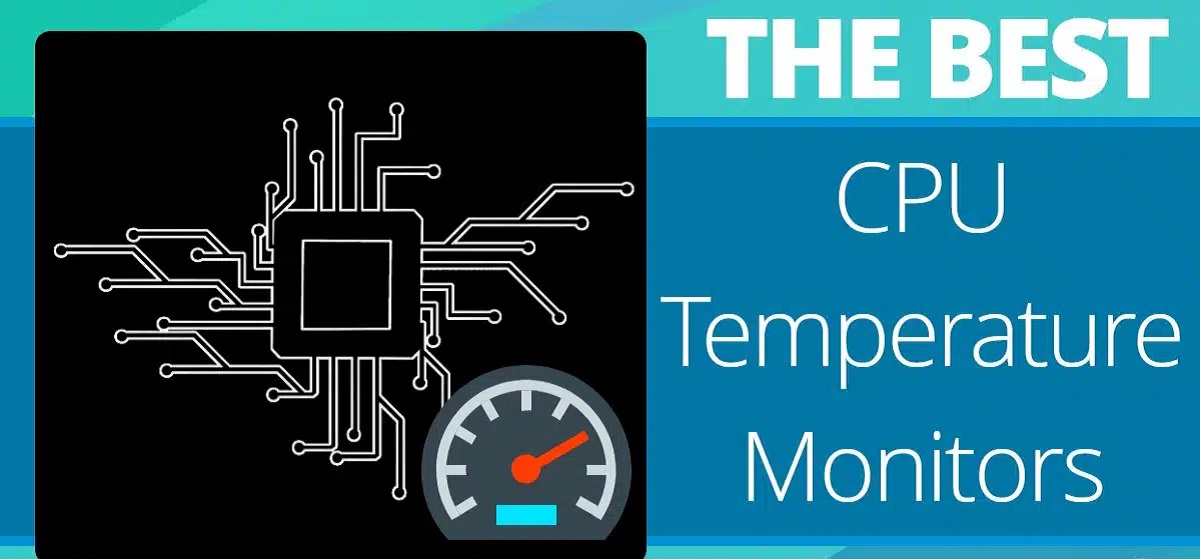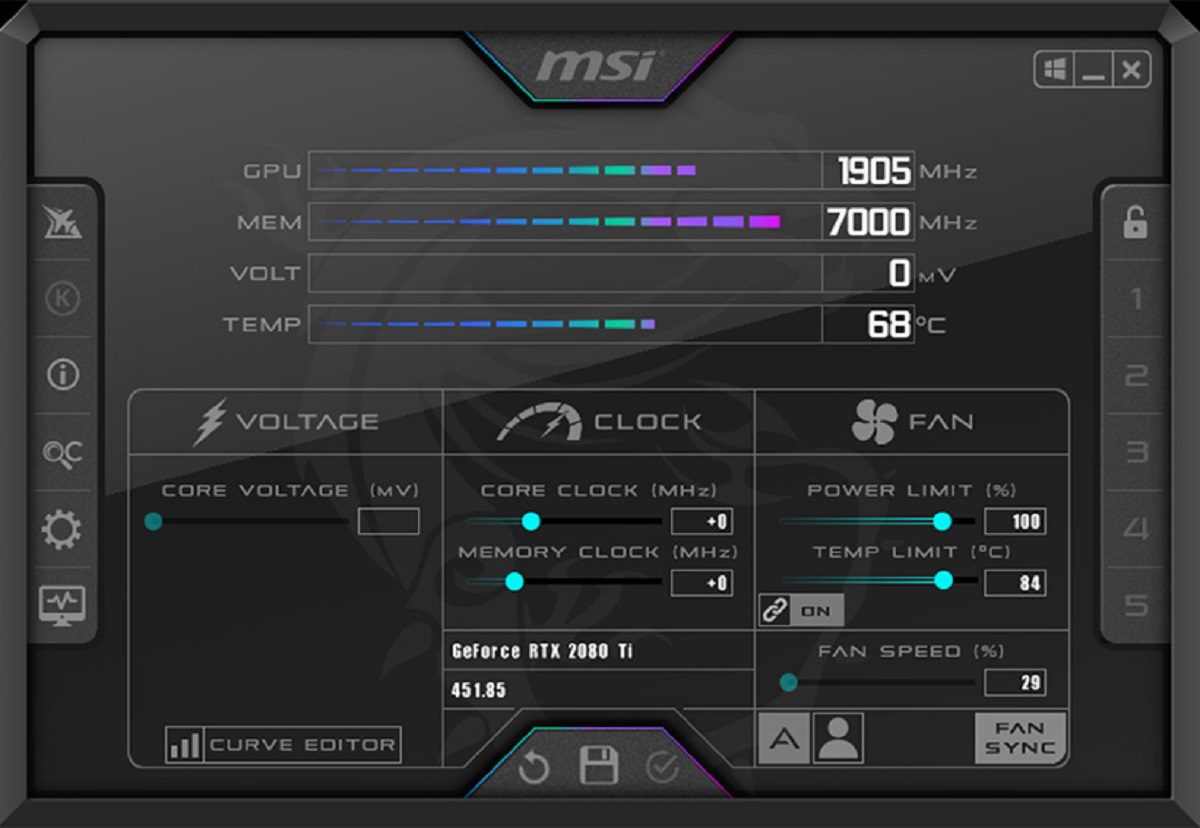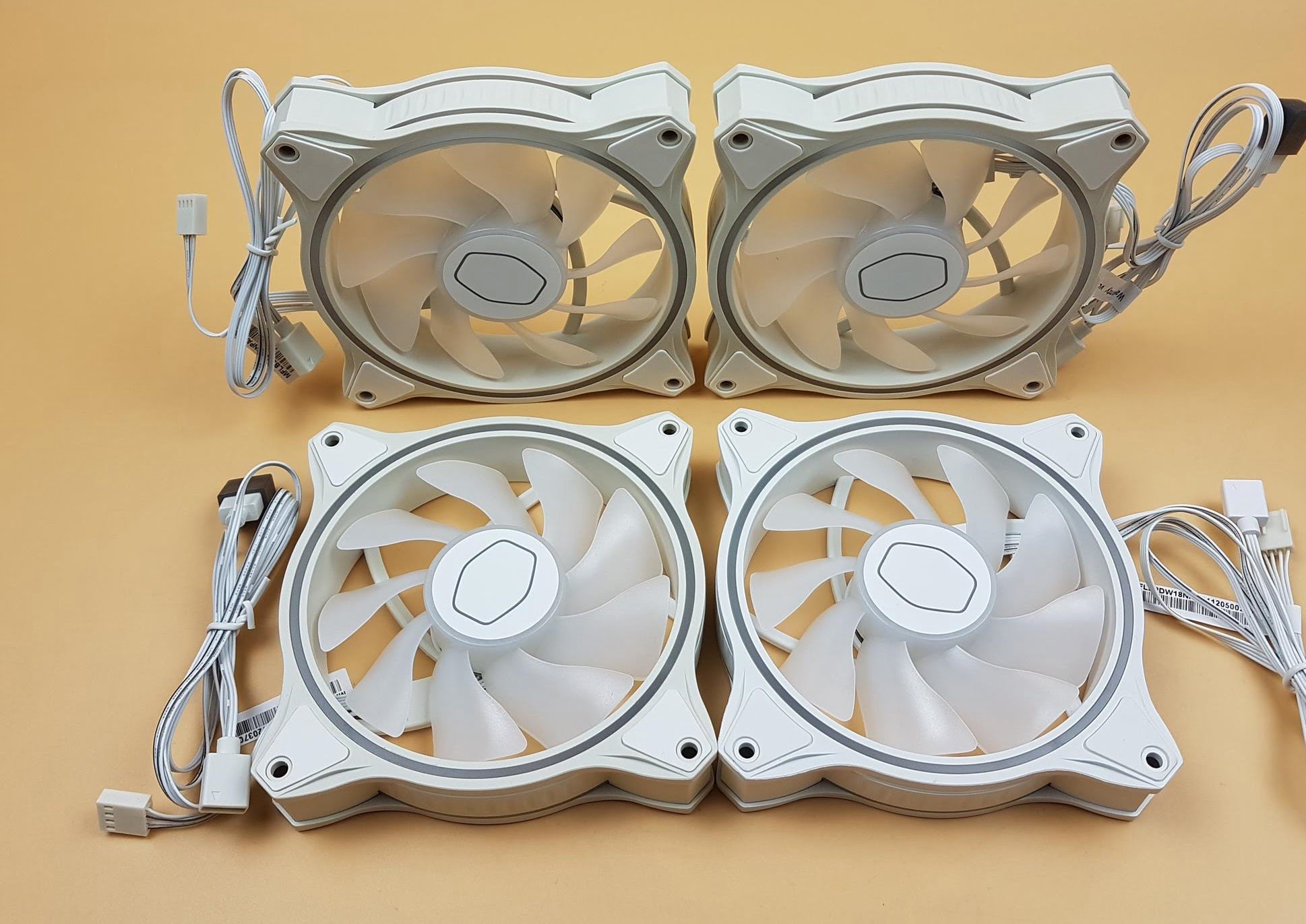Introduction
Adjusting the CPU voltage is a crucial aspect of optimizing computer performance and power consumption. The CPU (Central Processing Unit) is the heart of a computer system, responsible for executing instructions that drive all tasks and processes. The voltage supplied to the CPU determines its operating speed and power consumption.
CPU voltage refers to the electrical potential difference applied to the CPU that allows it to function properly. The voltage is typically set by default in the BIOS (Basic Input/Output System) or UEFI (Unified Extensible Firmware Interface) of a computer, but it can also be adjusted using specialized software interfaces.
Proper adjustment of the CPU voltage has significant implications for the overall performance and efficiency of a computer system. When the voltage is set too high, it can lead to excess heat generation, which can reduce the lifespan of the CPU and potentially cause instability or crashes. On the other hand, setting the voltage too low can result in instability and performance issues.
Optimizing the CPU voltage allows users to fine-tune the performance and power consumption of their computers. By finding the optimal balance between performance and energy efficiency, users can reduce the power consumption of their systems, resulting in lower electricity bills and decreased environmental impact.
In this article, we will explore two software interfaces that allow users to adjust the CPU voltage: the BIOS and operating system utilities. Understanding how these interfaces work can empower users to optimize their computer systems for their specific needs, whether it be for gaming, video editing, or everyday tasks.
What is CPU voltage?
CPU voltage, also known as Vcore voltage, refers to the electrical energy supplied to the Central Processing Unit (CPU) in a computer system to ensure its proper functioning. It is an essential factor that directly affects the performance, stability, and power consumption of the CPU.
CPU voltage is measured in volts (V) and determines the electrical potential difference needed to enable the CPU to operate at a given clock speed. The CPU voltage sets the amount of power required for the CPU to execute instructions and carry out data processing tasks.
When the CPU voltage is too low, there may not be enough electrical power for the CPU to function properly. This can lead to instability, system crashes, and errors. On the other hand, excessive CPU voltage can generate excessive heat and increase power consumption, affecting the overall performance and longevity of the CPU.
The default CPU voltage is set by the manufacturer based on the specifications of the CPU. However, every CPU is unique, and some CPUs can operate effectively with lower voltages, while others may require slightly higher voltages for optimal performance.
Adjusting the CPU voltage allows users to find the right balance between performance and power consumption based on their specific needs. By optimizing the CPU voltage, users can potentially achieve higher clock speeds, better stability, and lower power consumption.
It is important to note that adjusting CPU voltage requires careful consideration and should be approached with caution. Incorrect voltage settings can result in system instability, overheating, and even permanent damage to the CPU. Therefore, it is advisable to thoroughly research and understand the capabilities and requirements of the specific CPU before attempting any voltage adjustments.
In the following sections, we will explore the software interfaces that enable users to adjust the CPU voltage, providing greater control over their computer systems’ performance and power efficiency.
Importance of Adjusting CPU Voltage
Adjusting the CPU voltage plays a crucial role in optimizing the performance and power consumption of a computer system. It offers several benefits and considerations that make it an important aspect for both casual users and enthusiasts alike.
1. Improved Performance: Fine-tuning the CPU voltage can unlock the potential for improved performance. By providing the CPU with the optimal voltage, it can operate at higher clock speeds and process instructions more efficiently. This can result in faster computational tasks, smoother multitasking, and enhanced overall system responsiveness.
2. Reduced Power Consumption: Adjusting the CPU voltage allows for fine-grained control over the power draw of the CPU. Lowering the voltage to the minimum required level reduces power consumption, resulting in reduced electricity bills and a smaller carbon footprint. This is particularly beneficial for laptops and portable devices where battery life is a critical factor.
3. Cooler and Quieter Operation: By optimizing the CPU voltage, users can strike a balance between performance and heat output. Excessive voltage can lead to higher temperatures, requiring more aggressive cooling solutions and resulting in additional noise. By adjusting the voltage, users can reduce heat generation, resulting in a quieter and more efficient cooling system.
4. Extended Lifespan: Over time, high temperatures and excessive voltage can degrade the internal components of the CPU. By adjusting the voltage to an optimal level, users can keep the CPU operating within safe temperature ranges and reduce the risk of premature wear and tear. This can result in a longer lifespan for the CPU, delaying the need for costly upgrades or replacements.
5. Flexibility for Overclocking: Overclocking enthusiasts often push their CPUs beyond their stock clock speeds to achieve even higher levels of performance. Adjusting the CPU voltage is crucial in these scenarios, as it provides the necessary power to support stable overclocks. By carefully adjusting the voltage, enthusiasts can maximize the potential of their CPUs while maintaining stability.
It’s important to note that adjusting the CPU voltage requires caution and careful monitoring. Extreme voltage adjustments can lead to instability, system crashes, and damage to the CPU. It is recommended to make gradual adjustments, stress test the system, and monitor temperatures to ensure stability and prevent any potential damage.
In the next sections, we will delve into the two primary software interfaces that enable users to adjust the CPU voltage: the BIOS and operating system utilities.
Software Interfaces for Adjusting CPU Voltage
There are two primary software interfaces that allow users to adjust the CPU voltage: the BIOS (Basic Input/Output System) and operating system utilities. These interfaces provide different levels of control and flexibility for adjusting the CPU voltage based on user preferences and requirements.
1. BIOS: The BIOS is a firmware interface that initializes hardware components during the computer’s boot-up process. It provides low-level control over various system settings, including CPU voltage. Accessing the BIOS interface typically requires pressing a specific key during system startup, such as Del, F2, or Esc, depending on the motherboard manufacturer.
Within the BIOS, users can locate the CPU voltage settings, often under a section labeled “CPU Configuration” or “Voltage Control.” The options available may vary depending on the motherboard manufacturer and model. Users can typically adjust the CPU voltage by either manually entering a specific value or selecting from predefined voltage profiles.
BIOS provides a comprehensive control interface for adjusting CPU voltage, allowing users to fine-tune the voltage to their desired level. However, it is essential to exercise caution and reference the motherboard’s documentation or the manufacturer’s website for guidance on safe voltage ranges for the specific CPU model.
2. Operating System Utilities: Apart from BIOS, some operating systems provide utilities that allow users to adjust the CPU voltage within the software environment. These utilities offer more dynamic control over CPU voltage and can be useful for users who prefer adjusting settings without rebooting the system.
Operating system utilities for adjusting CPU voltage can come in the form of third-party software or manufacturer-specific tools. These utilities may have different names and user interfaces, but their functionality remains the same: adjusting the CPU voltage to achieve the desired performance and power consumption balance.
Such utilities often provide a graphical interface where users can select performance profiles or manually adjust voltage sliders to increase or decrease CPU voltage. These tools may also provide advanced options for overclocking and monitoring CPU temperature and voltage levels in real-time.
It is important to note that the availability of software interfaces for adjusting CPU voltage may vary depending on the motherboard, CPU, and operating system. Users should consult their motherboard and CPU documentation, as well as the software utilities provided by their operating system or motherboard manufacturer, for specific instructions on accessing and using these interfaces.
Adjusting the CPU voltage through either the BIOS or operating system utilities requires careful monitoring and testing. Experimentation with incremental changes and stress testing the system after each adjustment can help ensure stability and prevent potential damage to the CPU.
Next, we will conclude the article by summarizing the importance and benefits of adjusting CPU voltage.
BIOS
The BIOS (Basic Input/Output System) is a firmware interface embedded in the computer’s motherboard. It provides low-level control over various system settings, including CPU voltage. Accessing the BIOS interface allows users to adjust the CPU voltage and fine-tune its performance to their specific needs.
Accessing the BIOS interface typically involves pressing a specific key (such as Del, F2, or Esc) during the computer’s boot-up process, depending on the motherboard manufacturer. Once inside the BIOS, users can navigate through different menus to locate the CPU voltage settings.
The exact location of CPU voltage settings within the BIOS interface can vary depending on the motherboard manufacturer and model. Generally, they can be found under a section labeled “CPU Configuration,” “Voltage Control,” or a similar name. Within this section, users can manually enter a specific voltage value or select from predefined voltage profiles.
When adjusting the CPU voltage in the BIOS, it is crucial to exercise caution and refer to the motherboard’s documentation or the manufacturer’s website for guidance on safe voltage ranges for the specific CPU model. It is recommended to make gradual adjustments and test system stability after each change.
The BIOS interface provides a comprehensive control interface for adjusting CPU voltage. It allows users to fine-tune the voltage according to their specific requirements, such as overclocking or achieving a balance between performance and power consumption. Additionally, the BIOS interface may offer additional options for adjusting other CPU-related settings, such as clock speed and power-saving features.
Adjusting the CPU voltage in the BIOS provides a reliable and stable method, as it modifies the settings at the hardware level. The changes made in the BIOS are applied during the system’s boot-up process, ensuring consistent voltage settings each time the computer starts.
However, it’s important to note that inexperienced users should proceed with caution and avoid making drastic voltage adjustments without proper knowledge. Extreme voltage settings can cause system instability, crashes, and even permanent damage to the CPU or other components.
In summary, the BIOS interface provides users with a robust and comprehensive tool to adjust the CPU voltage. It allows for fine-tuning the voltage to achieve optimal performance, power efficiency, and system stability. Careful consideration and testing are advised when making changes to CPU voltage settings in the BIOS, ensuring safe and optimal operation of the computer system.
Operating System Utilities
Operating system utilities provide an alternative method for adjusting the CPU voltage within the software environment. These utilities offer more dynamic control over the CPU voltage and can be convenient for users who prefer adjusting settings without rebooting the system.
Operating system utilities for adjusting CPU voltage come in various forms, including third-party software and manufacturer-specific tools. These utilities often provide graphical interfaces that allow users to select performance profiles or manually adjust voltage sliders to increase or decrease the CPU voltage.
These software utilities may also provide advanced options for overclocking the CPU and monitoring real-time CPU temperature and voltage levels. They offer a more user-friendly interface compared to the BIOS, making it easier for users to visualize and adjust the CPU voltage settings.
The availability of operating system utilities for adjusting CPU voltage may depend on the specific motherboard, CPU, and operating system being used. Some motherboard manufacturers provide dedicated software utilities that are tailored to their hardware, while other utilities are provided by third-party vendors.
While these utilities offer convenience and flexibility, it is important to note that they are dependent on the operating system and may have limitations compared to BIOS adjustments. The voltage changes made through these utilities are typically software-level modifications and may not have the same level of stability as changes made in the BIOS.
When using operating system utilities to adjust CPU voltage, users should exercise caution and monitor the system’s stability and temperature levels. It is recommended to make gradual adjustments and perform stress tests to ensure the system remains stable under different workloads.
One advantage of using operating system utilities is the ability to make adjustments on the fly without the need to restart the system. This can be particularly useful for users who need to fine-tune their CPU voltage settings for specific tasks, such as gaming or video editing, while the system is running.
However, it is important to note that certain operating system utilities may require administrative privileges or specific hardware support to access and modify CPU voltage settings. Users should consult the documentation provided with the utility or the manufacturer’s website for guidance on operating system compatibility and usage instructions.
In summary, operating system utilities provide a more user-friendly and dynamic method for adjusting the CPU voltage compared to the BIOS. These utilities allow users to make changes on the fly without rebooting the system and often offer additional features for monitoring and overclocking the CPU. However, users should exercise caution and ensure system stability when making voltage adjustments through operating system utilities.
Conclusion
Adjusting the CPU voltage is a vital aspect of optimizing computer performance and power consumption. The CPU voltage determines the operating speed, power consumption, and overall efficiency of the CPU. Fine-tuning the CPU voltage allows users to achieve the desired balance between performance and energy efficiency.
In this article, we explored the two primary software interfaces that enable users to adjust the CPU voltage: the BIOS and operating system utilities. The BIOS provides a comprehensive and stable method for adjusting CPU voltage at the hardware level. On the other hand, operating system utilities offer more dynamic control within the software environment, allowing users to make adjustments on the fly.
When adjusting the CPU voltage, it is crucial to exercise caution, monitor system stability, and consider the specific requirements and limitations of the CPU and motherboard. Extreme voltage settings can lead to instability, crashes, and potential damage to the CPU or other components.
There are numerous benefits to adjusting the CPU voltage. By finding the optimal balance, users can achieve improved performance, reduced power consumption, cooler and quieter operation, extended lifespan of the CPU, and flexibility for overclocking.
Whether using the BIOS or operating system utilities, users should conduct proper research, consult documentation, and follow best practices to ensure safe and effective adjustment of CPU voltage.
Ultimately, the ability to adjust CPU voltage empowers users to optimize their computer systems, tailor the performance to their specific needs, and make significant improvements in power efficiency. By making informed decisions and fine-tuning the CPU voltage, users can unlock the full potential of their computer systems and create a balance between performance and energy consumption.

























